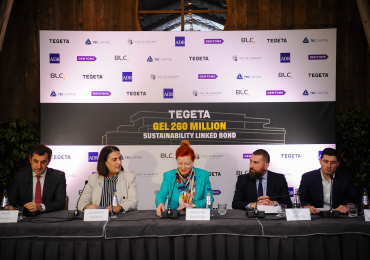Vietnam is forecast to become the second-largest economy in Southeast Asia after Indonesia and the 20th-largest economy in the world by 2036.
Vietnam appears to be Asia’s most interesting macro story and investment case for next year. The country’s ongoing economic reforms combined with recent geopolitical developments have certainly bolstered the country’s outlook.
Vietnam is industrializing and urbanizing rapidly. Under the considerable growth rate of its GDP, the potential opportunities for high returns in the stock market are increasing. Therefore, more and more investors are beginning to pay attention to Vietnamese investment and benchmark the early development path of China ‘s economy. If is interesting to note that the first state visit to China after xi Jing ping 20th National Congress of the Communist Party of China (CPC) was the official state visit of Vietnam and the Vietnamese Communist Party chief Nguyen Phu Trong.
Vietnam is still currently classified as a frontier market. The expected upgrade to EM status could lead to a re-rating of Vietnamese assets and result in a profitable investment opportunity. Vietnam’s inclusion into some of the world’s most influential equity indices could deliver a much-deserved boost in terms of interest from investors in the nation’s stock market.
Although investors will find that most private banks and wealth managers are still unable to buy or sell Vietnamese equities directly, I would argue that this should be seen an encouraging sign because the market is still not yet on the radar of most investors but the indications are that it will be in the future.
Many forget how far Vietnam has progressed since the launch of its “doi moi,” or renovation, policies back in 1986. The political and economic initiative introduced just over two decades ago was intended to facilitate the country’s transition from a centralized economy to a “socialist-oriented market economy.” Doi moi was meant to combine government planning with free-market incentives.
In the beginning of the 90s, the per capita income of Singapore was 125 times higher than Vietnam, now it is 24 times. Thailand used to be 16 times higher than Vietnam, now the figure is 2.5 times. Compared to Japan, the figure came down from 267 times to 16 times, or the U.S., the figure decreased from 252 times to the current 25 times.
Vietnam’s wealth grew by 210% between 2007 and 2017, according to the real estate consultancy Knight Frank, and more than 200 Vietnamese citizens now have investable assets of at least $30 million. Having expanded by 320% between 2000 and 2016, Vietnam’s “super-rich” class is growing faster than that of India (290%) and China (281%). And if current trends continue, it will have grown by another 170%–from 14,300 to 38,600 millionaires–by 2026.
Vietnam has been seen by many as having benefited from the new geopolitical realities of the U.S.-China trade war. Vietnam is expected to attract more manufacturing FDI as companies seek to build a “China plus one” sourcing strategy to mitigate the risk of further trade disputes between the world’s two largest economies. In terms of the stock market, the most direct beneficiaries of this ongoing trend include the Vietnam’s industrial park operators, logistics and port operators and air cargo handling companies
Both North and south Korea maintain good relations with Hanoi. As of September, South Korea had 9,438 investment projects in Vietnam with total registered capital of $80.5 billion, ranking it first among countries and territories investing in Vietnam. Bilateral turnover reached $78 billion in 2021, up 18.2 per cent compared to 2020. South Korea is Vietnam’s third-largest export market and second-largest import source.
Korean investors can access the VN stock market directly from their Korean accounts as several Korean brokerages have full fledged securities operations in Vietnam.
the World Bank predicted a weak 2.8% global growth for 2022, Vietnam is expected to grow 7.2%. Supporting such an optimistic view was that the country posted a GDP growth of 8.83% during the first nine months of 2022, the highest nine-month growth during the 2011-2022 period.
The Government has recently suggested the GDP growth in 2022 could be around 8%, surpassing the goal set by the National Assembly by 2-2.5 percentage points. multinational companies seek to expand in Vietnam under its China Plus One strategy, and because of the 15 free trade agreements Vietnam has.
An export-oriented manufacturing and inbound foreign direct investment drive Vietnam’s economic growth. While global uncertainty persists, Vietnam’s prospects are reassuring as the economy continues to be among the world’s fastest-growing.
Rainer Michael Preiss is Partner & Portfolio Strategist at Das Family Office in Singapore.
CIO, Investment Advisor / Asset Management / Strategist and Financial Columnist












